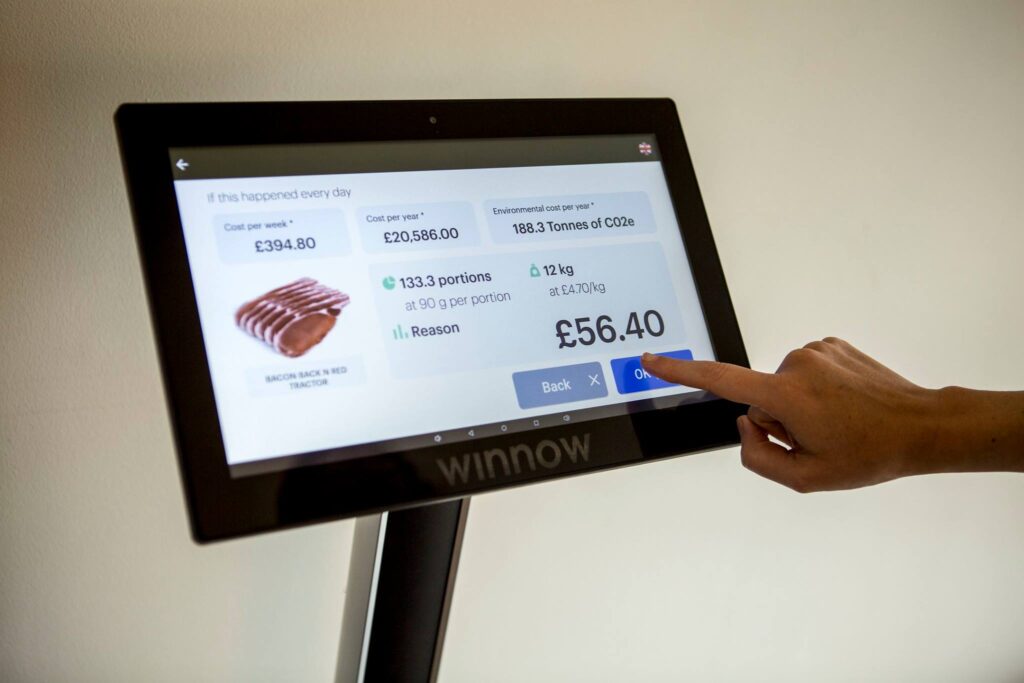FRANCISCA SEPÚLVEDA
Much is written about the impact of fossil fuel carbon emissions, but food waste is a lesser known problem in the greater cause of environmental sustainability. Winnow, a rising tech startup, offers a system to limit the amount of food waste in kitchens within the hospitality industry around the world. In an interview with managing director at Winnow, Ignacio Ramirez Rico, Sevillian native and alumni of the University of Seville, talks about the importance of solving global food waste and how private businesses can create innovative solutions to that problem.
How big is the problem of food waste? Ignacio Ramirez says: “It’s a tragedy actually. We waste a third of the food we produce… To put it into perspective, that’s a trillion dollar problem. When we talk about carbon emissions and the carbon footprint we have, if we were to compare the carbon emissions from food waste to other countries, it would be the third largest producer of carbon emissions in the world, a little bit behind the US and China… Imagine if a country like the US was carbon free tomorrow, that is what we could achieve by solving this issue.”
30% of the food produced is wasted
The amount of carbon emissions produced by food waste is not exaggerated. The Food and Agriculture Organization of the UN (FAO) in their 2013 report estimated emissions from food waste to be 3.3 billion tonnes of CO2 costing $750 billion dollars annually.
Additionally, food waste is more than just about on carbon emissions and money. All of the resources that go into making a large percentage of food have gone wasted. “We use about 18% of landmass to produce food and we waste 30% of the food produced. That means we use about 6 or 7% of landmass to produce waste.” That is 1.4 billion hectares of land used to produce food that will not be eaten.
Water, a scarce resource in lands susceptible to droughts, is also being wasted. Agriculture accounts for roughly 70% of water use world-wide. Ramirez says, “On average one kilo of food consumes almost 200 liters of water. A tomato itself needs almost 40 to 80 liters, depending on the tomato.” Different types of foods will need more or less amounts of water. Animal products for instance will need an exorbitant amount of water due to their long raising periods.
Let’s not forget that the energy and resources are used to grow, wash, refine, clean, package, transport, and cool the various agricultural items that show up in markets, all producing carbon and food waste.
Not every part of the agricultural supply-chain creates the same amount of waste in each country. Europe and the US for example, waste the most food on the farm and on the consumer-side (supermarkets, restaurants, home-kitchens). Transportation results in little waste. In developing countries the opposite problem exists. Developing nations waste food during storage and transportation of food due to out-dated facilities. Countries like the UAE, where the average food waste is 197 kg per person per year, have instituted a pledge to save three million meals yearly by 2020 with goals to cut down on waste and save 13 billion dirhams ($3.5 billion) lost yearly in the economy. In developing nations in Sub-Saharan Africa and South/South-East Asia that are more susceptible to food shortages, the averages for food waste per capita per year are around 6 to 11 kgs.
Why then are foods being wasted in rich countries? The overproduction of food leads to the consumer and the hospitality industry to become more picky with their selection of food items. Ramirez shared his thoughts: “When we think about food we think of it as economic capital when that’s just fundamentally wrong… A lot of the issues are behavioral and educational, the way we consume. Developing countries don’t have a problem with imperfect products. Those consumers [in developed nations] want a perfectly round tomato”. The behavioral problem does not stop at the shape and color of produce. The other issue is with prepacked foods. He continued: “No one wants to recognize it, but most of us check the expiration date. If you have one that is two days away, but there is a product that is four days a way, you chose the second one. Which means no one takes the one that expires in two days so that one has gone wasted.”
The Winnow monitor combating food waste
How Winnow reduces the amount of food wastes lies in their monitoring technology. Winnow offers two waste monitor systems which identify and measure the amounts of food thrown away in kitchen bin throughout the day.
“Sustainable practices should be the normal,” says Ramirez. After the initial learning period for both the AI and the kitchen staff, the monitoring systems are integrated into everyday kitchen procedure to make smarter decisions on buying ingredients and planning portion sizes. Winnow sites an incredible 50% reduction in food waste from over a thousand kitchen using their monitoring technology. Around 23 millions meals and thirty-nine thousand tonnes of CO2 were saved.
“The way we consume everything is an issue. Food is just a reflection of the way we consume stuff.” As Ramirez says, reducing food waste is one part of the great environmental sustainable issue. However, by working on one major problem, progress can be made. “By lowering demand, you will reduce your waste in every level.”
Advice to reduce food waste at home
As someone who has worked with food his entire life, Ignacio Ramirez offers four steps for doing your part in reducing waste at home: “Plan in advance. Buy what you need. Check your dates. Reuse.” Even if the steps seem simple to follow Mr. Ramirez admitted the difficulty with follow through. “We don’t plan easily. We buy with our eyes easily, the same as we eat with our eyes… How many times at home have I opened my cabinet, and I’m in this business, and I ask ‘When did I buy this?’ only to find out it was expired. Even if the item has a shelf life of four years, I still haven’t eaten it.”
Mr. Ramirez was raised with the steps to reduce waste and he uses them in his cooking today. “I’m really lucky because I grew up in Southern Spain… If I look at what my mom had taught me to cook, most of the traditional dishes are made with leftovers. Gazpacho is made with vegetables that people will say are going bad. Croquettes are actually made from the leftovers of the boschetto. When my mom cooked she planned for five days. The leftovers from the first meal would make the meals of the next few days. She reused.”












